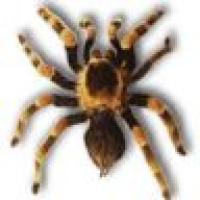Saturday, November 2, 2019 4:29 am - 7:29 am
Ontario
Barbados
Utterly lacking the point that leather-based” (fka ‘pores and skin') requires the precise murder of a living creature, and as living creatures are members of the eco-system, this is decidedly not ‘eco-friendly.' Should we use a poisonous substitute? No. We must always produce better material that is as appealing as we've got come to believe the flayed pores and skin of animals is. This article seriously overlooks the fact of what leather is and acts as if it is merely ‘sourced' from a subject or other inanimate harvest provide. Animals raised for consumption don't lead joyful lives-they suffer enormously, and the sterilization of their quick, brutal experience is a key ingredient of our lack of ability to get to really humane, eco-friendly strategies of clothes and food manufacturing. Spend some time in the locations the place your leather-based comes from, especially low cost, Chinese language leather-based and fur that is typically sourced from canines-household canine, German Shepherds, Golden retrievers, and many others-after which evaluate the viability of real leather to artificial options. It is helpful to first have an understanding of what leather-based is: the conceal of an animal. Most high quality leather you encounter shall be a byproduct of the US beef industry; repurposed from cows that have been raised for food these skins are top quality and properly-maintained. Full-grain leather-based is the head of what leather-based might be. It's sturdy sufficient to present structure but, is luxuriously comfortable to the touch. It hasn't been manipulated by humans sanding it down, so it incorporates the lifetime of the animal, but hardly ever has vital flaws. Because it is preserved and intact, the leather-based fibers themselves are durable.<img class='aligncenter' style='display: block;margin-left:auto;margin-right:auto;' src="https://thuybich.com/wp-content/uploads/2019/04/leather-101-leather-grades-800x400.jpg" width="263px" alt="what leather does fossil use"/>
Fully lacking the point that leather” (fka ‘skin') requires the actual homicide of a living creature, and as dwelling creatures are members of the eco-system, that is decidedly not ‘eco-pleasant.' Should we use a poisonous substitute? No. We should produce better materials that is as appealing as we've got come to believe the flayed skin of animals is. This article critically overlooks the fact of what leather-based is and acts as though it's merely ‘sourced' from a area or other inanimate harvest provide. Animals raised for consumption do not lead glad lives-they endure enormously, and the sterilization of their quick, brutal experience is a key component of our incapability to get to actually humane, eco-friendly strategies of clothing and meals manufacturing. Spend some time in the locations where your leather comes from, especially low-cost, Chinese language leather-based and fur that is typically sourced from dogs-family canines, German Shepherds, Golden retrievers, and so forth-and then compare the viability of actual leather to artificial alternatives. It's useful to first have an understanding of what leather is: the conceal of an animal. Most quality leather you encounter will probably be a byproduct of the US beef trade; repurposed from cows that have been raised for food these skins are top quality and well-maintained. Full-grain leather is the head of what leather-based can be. It's sturdy sufficient to give construction but, is luxuriously smooth to the contact. It hasn't been manipulated by people sanding it down, so it incorporates the lifetime of the animal, but hardly ever has important flaws. As a result of it's preserved and intact, the leather-based fibers themselves are sturdy.<img class='aligncenter' style='display: block;margin-left:auto;margin-right:auto;' src="https://i2.wp.com/sourcingjournal.com/wp-content/uploads/2019/09/isatantec.jpg?w=1000&quality=98&ssl=1" width="262px" alt="what leather does louis vuitton use"/>
Fully lacking the point that leather” (fka ‘skin') requires the actual homicide of a living creature, and as dwelling creatures are members of the eco-system, that is decidedly not ‘eco-pleasant.' Should we use a poisonous substitute? No. We should produce better materials that is as appealing as we've got come to believe the flayed skin of animals is. This article critically overlooks the fact of what leather-based is and acts as though it's merely ‘sourced' from a area or other inanimate harvest provide. Animals raised for consumption do not lead glad lives-they endure enormously, and the sterilization of their quick, brutal experience is a key component of our incapability to get to actually humane, eco-friendly strategies of clothing and meals manufacturing. Spend some time in the locations where your leather comes from, especially low-cost, Chinese language leather-based and fur that is typically sourced from dogs-family canines, German Shepherds, Golden retrievers, and so forth-and then compare the viability of actual leather to artificial alternatives. It's useful to first have an understanding of what leather is: the conceal of an animal. Most quality leather you encounter will probably be a byproduct of the US beef trade; repurposed from cows that have been raised for food these skins are top quality and well-maintained. Full-grain leather is the head of what leather-based can be. It's sturdy sufficient to give construction but, is luxuriously smooth to the contact. It hasn't been manipulated by people sanding it down, so it incorporates the lifetime of the animal, but hardly ever has important flaws. As a result of it's preserved and intact, the leather-based fibers themselves are sturdy.<img class='aligncenter' style='display: block;margin-left:auto;margin-right:auto;' src="https://i2.wp.com/sourcingjournal.com/wp-content/uploads/2019/09/isatantec.jpg?w=1000&quality=98&ssl=1" width="262px" alt="what leather does louis vuitton use"/>



